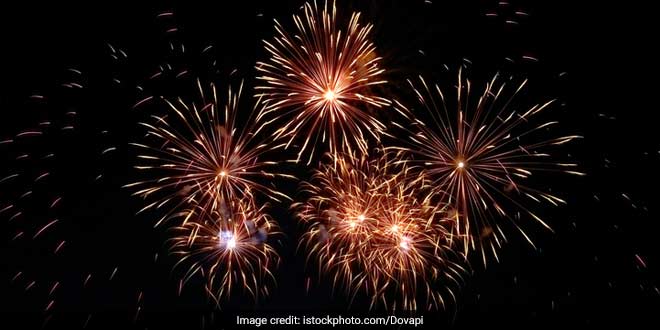New Delhi: The red and bright glare of the rockets and other crackers lighting up the dark moonless night of Diwali, may be a sight to behold, but it also fills the air with toxic pollutants. Why? Because the very ingredients that make the firecrackers attractive on being lit, are some of the most toxic metals and chemicals. When burned, the firecrackers emit toxic pollutants, particularly sulphur dioxide (SO2), carbon dioxide (CO2), carbon monoxide (CO), and particulate matter (PM) along with several metallic compounds, which not only have detrimental effect on air quality but also pose serious health risks, particularly to people suffering from respiratory diseases. Right from the gunpowder that fuels the flight of a noisy rocket to the metal that gives out the colourful sparkles during the fireworks, everything releases a large amount of harmful air pollutants. That is why Delhi’s top doctors declared air pollution as a public health emergency and urged people to not burn firecrackers and celebrate a green Diwali. Here’s how the different metals and chemicals used in making firecrackers can affect your health:
Lead: When heated emits highly toxic fumes that affect our brain and nerves. “Children can suffer developmental delays and learning disabilities by long exposure to lead,” said Dr Sameer Gupta, Vascular Medicine.
Magnesium: Inhalation of magnesium dust and fumes can cause a condition called metal fume fever, which is a flu like fever that can cause chills and muscle weakness.
Zinc: Otherwise not toxic in nature but can emit toxic fumes on burning and cause metal fume fever among people exposed to these fumes.
Manganese: Manganese dust and fumes can cause lung irritation, muscle rigidity, tremors and even paralysis.
Sodium, Pottassium and Copper form toxic gases on burning, which leads to irritation and can cause coughing, burning sensation and difficulty in breathing.
Cadmium fumes when inhaled over a period of time get deposited in the body, causing damage to liver and kidney. It can also make the bones brittle, which can cause fractures.
Phosphorous in the form of phosphate is poisonous when inhaled, ingested or even through skin contact. “The amount inhaled over a period of time affects the brain, causing headache, depression and affects concentration. It can also cause severe eye damage and affect the liver in the longer run,” said Dr Sonia Lal Gupta, Neurologist.
Sulphur in the form of sulphate irritates the airways and lungs, causing swelling and inability to breathe. It can also cause a burning sensation and irritate the skin.
Nitrates and nitrites: Both emit toxic fumes on burning and cause weakness, abdominal pain, convulsions and even coma, if a person is exposed for a longer duration.
“Fireworks can be harmful for your brain, liver, heart, kidney, skin and pretty much every organ of your body. Please opt for a green Diwali and say no to burning firecrackers,” urged Dr Gupta.
Also Read: Delhi’s Air Quality Enters ‘Red Zone’, Triggers Ban On Diesel Generators
(Disclaimer: This content including advice provides generic information only. It is in no way a substitute for qualified medical opinion. Always consult a specialist or your own doctor for more information. NDTV does not claim responsibility for this information.)































